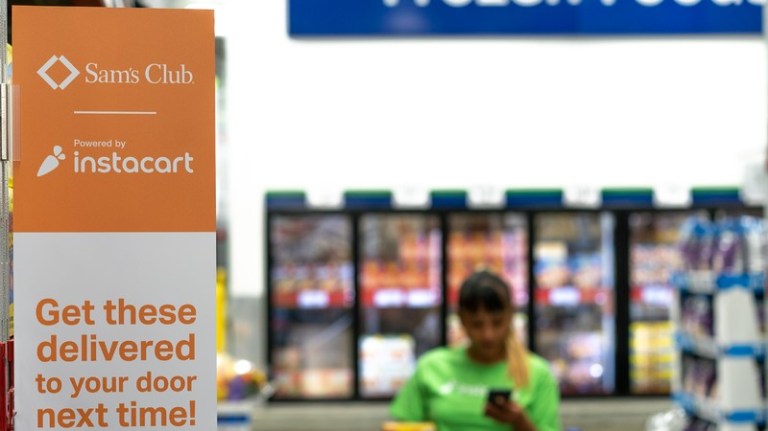Those were among the messages from a new PYMNTS discussion between Karen Webster and Sachin Padwal, VP of product management at Walmart-owned Sam’s Club. “Members are asking for the same assortment of products to be available for delivery” as in the Sam’s Club stores, he said. “It’s the convenience factor.”
Sam’s Club and Instacart first began working together in February of this year to offer same-day grocery delivery at select Sam’s Clubs in the United States. Under terms of the new expansion push, 50 percent of Sam’s Club locations will offer Instacart-powered delivery by the end of October.
The expansion will bring the service to 1,000 new ZIP codes and more than 100 new stores. Markets included in Instacart’s larger footprint will include New Jersey, Indianapolis and Houston, among others, according to the company. By November 2018, consumers will be able to place grocery orders at nearly 350 Sam’s Club locations.
This move comes as consumers start thinking about holiday shopping. The deal holds value for consumers who are not members of Sam’s Club, too: Non-members can shop at Sam’s Club via Instacart, though members will receive lower, specialized pricing. According to Walmart, deliveries can be ready in as little as one hour and can include non-grocery items as well.
Instacart Benefits
Advertisement: Scroll to Continue
The Instacart expansion with Sam’s Club offers a host of potential benefits. Consumers might buy from the retailer’s additional offering so they can rely on the delivery service to handle the logistics on days when they cannot or do not want to visit a physical store. Consumers might be tempted to buy more bulky or oversized items with this new delivery option. Consumers might also decide on a “bigger basket” when ordering for Instacart delivery, Padwal said. “It just depends on the person and context,” he told Webster during the PYMNTS interview.
Tests of the Instacart service, conducted before the expansion, did not indicate that shoppers would visit Sam’s Club less often, though. The Instacart deal with Sam’s Club will not lead to cannibalization, he said, but will drive and enrich the overall shopping experience.
Consumers continue to show an increasing eagerness to use all the commerce channels available to them, he added, and to enjoy the benefits and rewards of visiting a physical store location. For Sam’s Club, one relatively small, but significant, way to attract those shoppers are those free product samples. “My kids love the samples,” Padwal said.
Pleasing Parents
That might seem like a strange marketing boost, but there is real retail value in deploying programs and technologies that appeal to children — which, in turn, can appeal to their parents when they decide how long to spend browsing store aisles.
Take “scan-and-go” technology, for instance, which Walmart is starting to test and deploy within its retail ecosystem. The technology enables customers to scan and pay during in-store shopping without the need for a cashier. With the Scan & Go mobile app (which is free), customers can scan the barcodes on products as they do their in-store shopping and add products to their carts. The app maintains a list of the merchandise and a running total on their prices, enabling shoppers to do a self-checkout via their mobile devices instead of waiting in line.
“Customers want to come back and [use]” that technology, Padwal said. He called scan-and-go a “fun experience” that, in some instances, can serve to keep children occupied while their parents shop. He added that scan-and-go could prove very useful for those “stock-up” trips that consumers take to Sam’s Club, during which they prepare for, say, the coming of winter or the holidays.
Scan-and-go, along with the Instacart expansion, represents the latest moves to provide omnichannel shopping experiences to busy and increasingly sophisticated consumers — an experience that, not terribly long ago, involved orders faxed into Sam’s Club by customers, Padwal said. While the rise of eCommerce has brought constant threats to the brick-and-mortar business model, this recent news involving Sam’s Club and Instacart shows that stores don’t necessarily have to die off, but can be enriched by digital, online and mobile retail technology.




